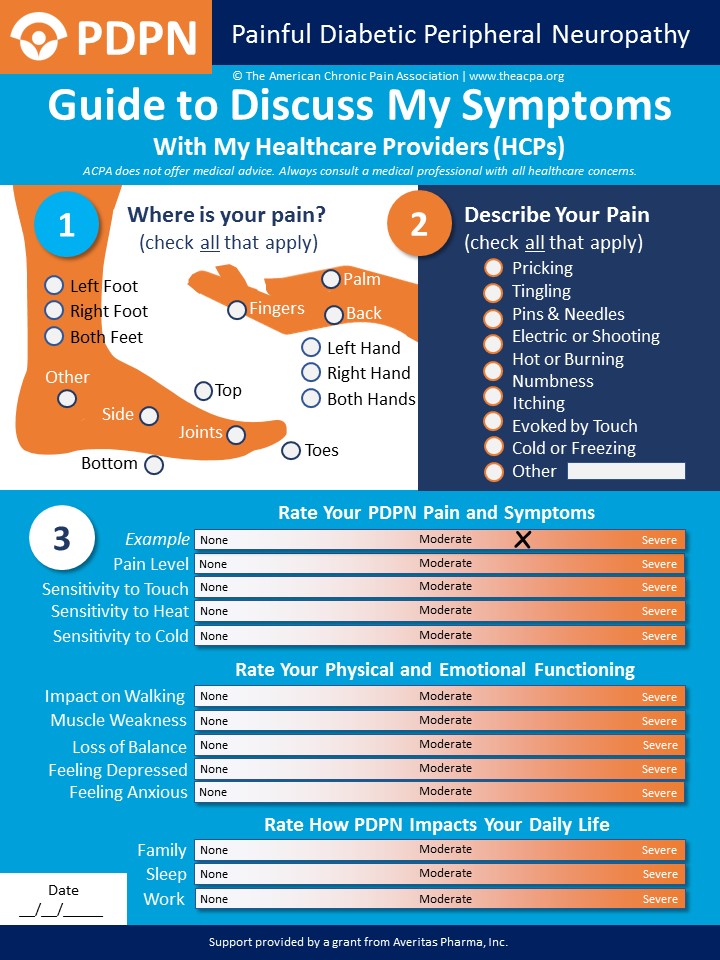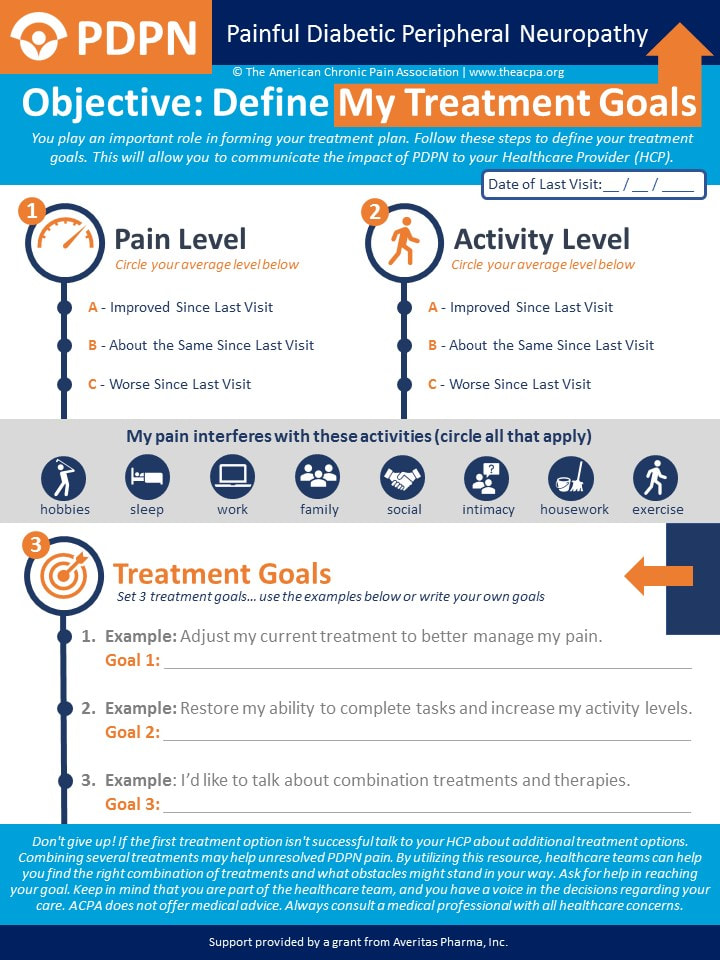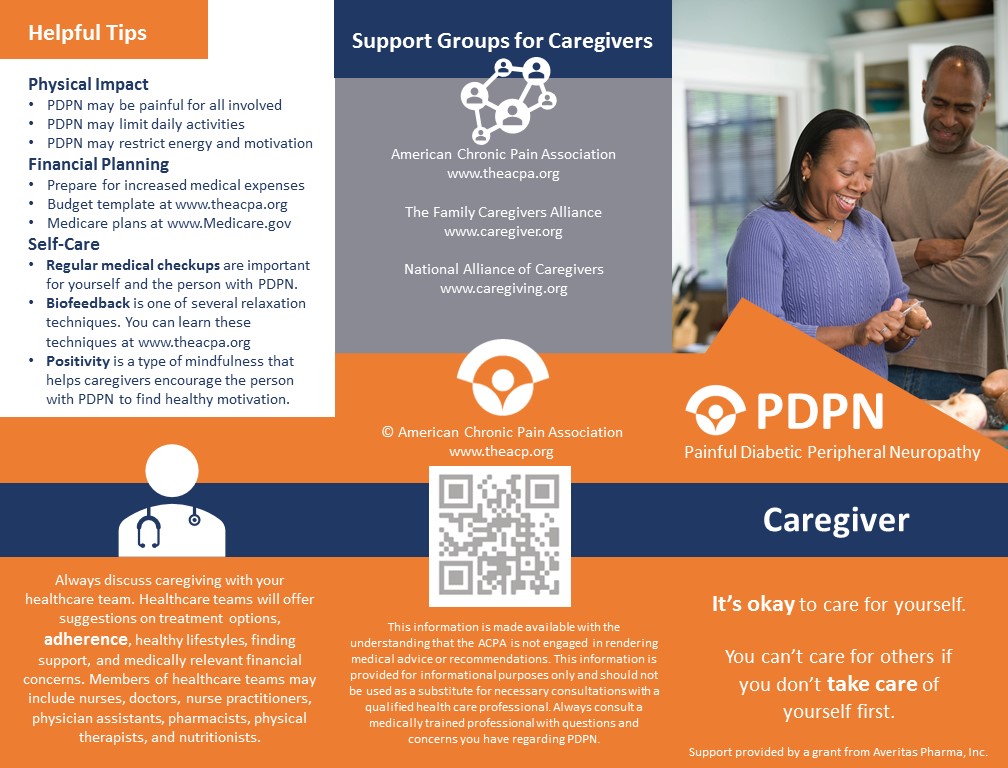Painful Diabetic Peripheral Neuropathy (PDPN) Resources
Painful Diabetic Peripheral Neuropathy (PDPN) occurs in one-fourth of those with Type II Diabetes. PDPN is deteriorating the quality of life of many whom are not properly treated or remain undiagnosed. It is causing severe chronic pain in our communities. The pain symptoms range from pricking, tingling, pins & needles, electric or shooting, hot or burning, numbness, itching or sensitivity to touch. It’s most common in the feet, which makes it highly disabling… reducing how active a person might be and causing a whirlwind of negative co-morbidities. These include other pain conditions, uncontrolled blood sugar, weight gain, poor sleep, anxiety, and depression. Indeed, pain escalates the complexity of managing diabetes. PDPN is cause by uncontrolled or long-standing diabetes. Despite causing severe Chronic Pain, as many as 12% of patients with PDPN do not report pain symptoms, and around 40% of those with PDPN fail to receive any treatment.
|
Guide to Discuss My Symptoms with My Healthcare Providers will allow a person to quickly communicate where the pain is located, describe the symptoms, and rate the severity of the symptoms.
|
Define My Treatment Goals with My Healthcare Providers will allow a person to quickly rate pain levels, activity levels, life impact, and establish treatment goals.
|
The caregiver brochure is a guide specifically for caregivers of those with PDPN… describing how to live more fully while caring for a person with PDPN.
|


